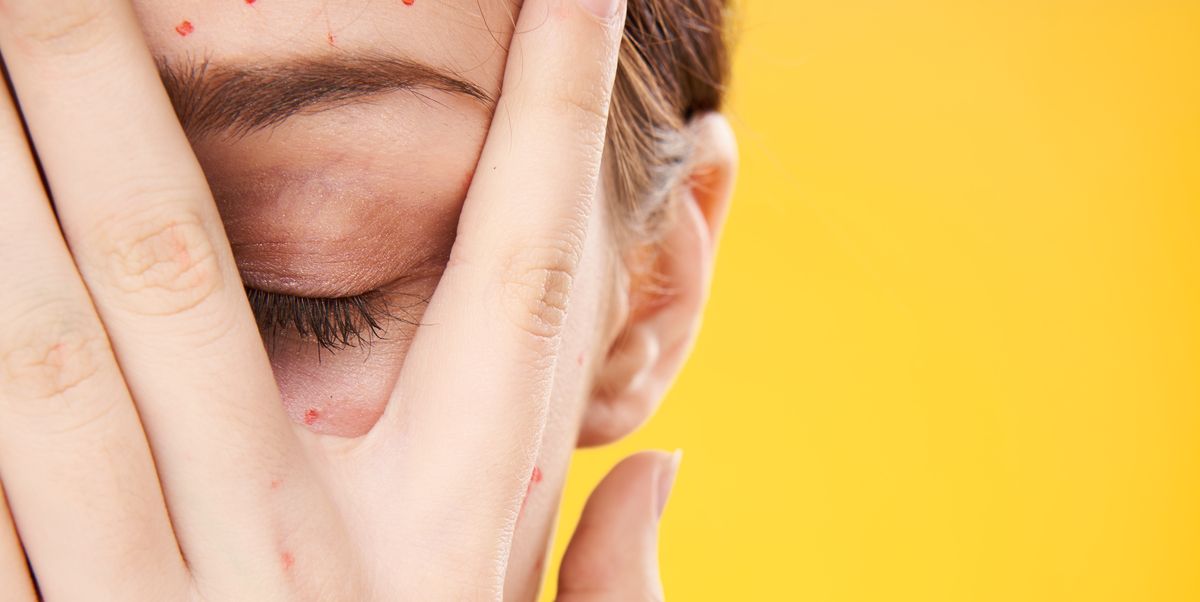If you developed a smallpox-like rash before this summer, you would probably suspect chickenpox and call your doctor for next steps. But now that monkeypox is circulating in the US and cases continue to rise across the country, it’s understandable to be confused. Could you be dealing with monkeypox or chickenpox?
It’s important to note that both viral infections are fairly rare in the US, but occur naturally. So how do you distinguish monkeypox from chickenpox? Here’s the deal, according to infectious disease experts.
Monkeypox vs Chickenpox
By now you’re probably familiar at some level with what monkeypox and chickenpox are, but it never hurts to recap.
Monkeypox is a viral disease that can be transmitted between humans or between humans and certain animals, according to the Centers for Disease Control and Prevention (CDC). The monkeypox virus, which causes monkeypox, is in the same family of viruses as the variola virus, the virus that causes smallpox, the CDC explains. Monkeypox symptoms are similar to smallpox symptoms but tend to be milder and the virus is rarely fatal. These symptoms can include the following, according to the CDC:
- Fever
- headache
- muscle pain and back pain
- Swollen lymph nodes
- chills
- exhaustion
- Sore throat
- Stuffy nose
- Cough
- A rash that can be on or near the genitals or anus, but can also appear on other parts of the body such as the hands, feet, chest, face, or mouth. The rash may be painful or itchy
Notable according to the CDC: Monkeypox is Not related to chickenpox.
Chickenpox is a highly contagious disease caused by the varicella zoster virus (VZV), the CDC explains. It can cause an itchy, blistery rash that usually appears on the chest, back, and face before spreading to the rest of the body.
Chickenpox used to be very common in the US, but since the chickenpox vaccine became available in the US in 1995, more than 3.5 million cases of the virus have been prevented, the CDC says.
How to distinguish monkeypox from chickenpox
It’s actually not easy for most people to tell the difference, says Thomas Russo, MD, professor and chief of the Department of Infectious Diseases at the University of Buffalo in New York.
“Both are viral infections that cause smallpox-like lesions,” he says. “Rarely in our lives have we had two smallpox diseases circulating at the same time.”
In general, monkeypox and chickenpox occur in “very different demographic groups,” says Dr. Russo. (Monkeypox has occurred primarily in men who have sex with men; chickenpox is typically more common in children). However, he does point out that “adults can get chickenpox if they’re not vaccinated,” and there have been at least two cases of monkeypox in children.
There are also some possible clues in the rashes that are “both similar and different,” says William Schaffner, MD, an infectious disease specialist and professor at Vanderbilt University School of Medicine.
Chickenpox, for example, creates a “very thin-walled, fragile blister” that’s usually filled with clear fluid, says Dr. Conductor. But monkeypox causes a “deep, firm or rubbery lesion — it’s much firmer and more stable than the chickenpox lesion,” he explains.
Chickenpox lesions “can rupture easily, while monkeypox lesions don’t,” says Dr. Conductor. Monkeypox lesions also tend to change over time and can become “navel-like,” meaning they form a depression or small crater in the center, says Dr. Conductor.
How long you’ve been sick also plays a role. “It will take two to four weeks for these monkeypox lesions to completely clear up, whereas chickenpox lesions clear up much faster,” says Dr. Conductor. (The CDC notes that chickenpox typically lasts about four to seven days.)
What should you do if you develop smallpox-like bumps?
Depending on where you live and who you interact with, the general population is at little risk of contracting either virus at this point. But if you suspect you have monkeypox or chickenpox, or you’re just not sure what’s going on, says Dr. Russo that it’s really best to call your doctor.
“The safest thing is to get tested,” says Dr. Russo. “There’s a test for chickenpox and a test for monkeypox.” You should call your doctor in advance to make sure they actually have the tests in the office, just to be safe.
And since both diseases are contagious, it’s recommended that you cover your bumps and wear a face mask when you go to the doctor’s office, just to be safe.
Korin Miller is a freelance writer specializing in general wellness, sexual health and relationships, and lifestyle trends, with work appearing in men’s health, women’s health, self, glam and more. She has a master’s degree from American University, lives on the beach and hopes to one day own a teacup pig and a taco truck.
#Monkeypox #Chickenpox #Difference


Leave a Comment